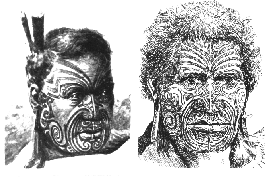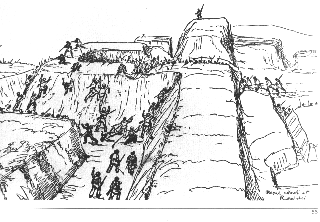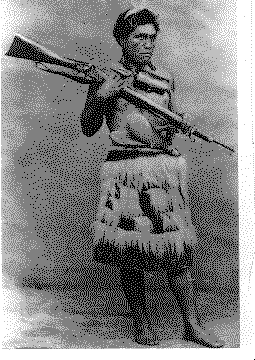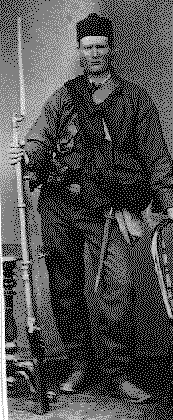|
New Zealand
|
|
(In Maori language ... A-o-te-a-roa ..."The
Land of the Long White Cloud")
|
|

|
New
Zealand is located approximately 1,200 Miles due east of Australia -
about the same distance that London (England) is from Moscow (Russia)
and is about 8,000 miles diagonally opposite the USA on the south-western
rim of the South Pacific Ocean.
|
|
New Zealand
today is a homonogeous culture of 12% Maori and 80% of descendants
of 18th century European Settlers. The country was originally colonised
by Maori around the year 1140AD - when 12 large ocean-going sailing
canoes from "Hawaiki" arrived on the northern beaches, bringing
several hundred hardy Polysesian settlers from the Pacific Islands.
The names of the canoes became the name for the tribe - ie "Arawa"
and "Tainui" - both tribes still exist today. The newly
arrived immigrants discovered a bush-clad but otherwise empty land
of both beauty and mystery. (Some Legends say there was an earlier
polonesian race already here - the "Maori-oris" but that
has never been definitley proven).
The twelve
tribes dispersed throughout the rugged northern and southern islands,
and within a few generations became strangers to each other. In order
to dilute the gene pool, it became common for one tribe to force march
many miles overland to raid another village (Pa) - using stone clubs
and spears in killing the men, and capturing the women for subjugation
and slavery as forced wives.
In order to
capture the "Mana" (Status, Pride, Respect) of the enemy
warrior it was common for the victorious to eat the slain enemy. As
there was little other protein "on the hoof" in New Zealand,
these meals became a standard dietary supplement, until the arrival
of the Pakeha (Pale skin Gods with eyes in the back of their heads
- a comment on the way the British row their longboats, facing backwards!)
who brought with them Pigs and Cattle - as well as the unfortunate
event of becoming a meal themselves occasionally! ("White man's
meat" was referred to as "Long Pork" by the Maori).
The Maori
were ferocious warriors who used psychology and intimidation in warfare
- the peruperu (War dance, a.k.a. Ha-ka ) was intended to give the
opposing force a preview of things to come - sometimes in the hope
that they would give up and go home - and fierce facial tattoos were
a sign of manhood and accomplishment amongst the fiercest of warriors.

Extensive Facial Tattoos were a sign of "Mana" or respect
|
|
Apart from
a brief visit by Dutch navigator Abel Tasman (who in the 17th century
called the place "Van Dieman's Land), the Maori were left pretty
much to themselves, and consequently they developed a highly organised
system of defended fortifications and root vegetable gardens which
were tended by the women as the "Warriors" lay about in
their "Whares" (pronounced "Forrys" - a type of
thatched hut).

Warrior relaxing
in his Whare before battle!
Other than
the odd raid for new blood (in all senses of the word) the Maori lived
a fairly idylic and quite organised lifestyle, with the women doing
most of the work - a far better lifestyle in fact than their ancestor's
decendants who remained in the Pacific Islands, and who continued
in a far more primitive existence.
Perhaps it's
true after all! The "Pioneers - whoever they are" who go
off in search of new lands are better equipped to evolve than those
who simply "stay at home" and do nothing.
|
|
Unfortunately
for the Maori - who "had it made" - the late 18th Century
brought the expansionist British (Capt. James Cook in the barquentine
ship "Endeavour") who were looking for expanded "growing
space" and New Zealand looked a winner! (In fact it became known
as the "Garden of England" as more and more farmers settled
here and exported their crops "back home" to England). This
caused dissention between the settlers and the Maori, and terrorist
actions began against the English immigrant farmers who were (sometimes
unfairly) given "Maori" land. The British "set in the
troops" to try to sort things out. The Maori retaliated with
a series of Raids on the newly arrived British troops - many of whom
were just inexperienced teenagers.

Maori raid
on troop encampment from cover of native Bush
|
|
In 1840
the British Government signed a Treaty with as many Maori Chiefs as
they could find at the time - giving Maori the protection of British
Citizenship and bestowing "unrestrained access to their land
and traditional fishing". Obviously the British Government of
the time recognised the Maori as the "Original Inhabitants"
of the land, and bestowed "ownership" of New Zealand on
them without question - otherwise they would have done what the contemporary
settlers in the United States were doing to the Indians in the 1800's
- kill them off!

Ceremonies
at the Signing of the Treaty
Introducing
the treaty could have been a major mistake on the part of the British
Government of the day, as 150 years on there is endless wrangling
over what the particular wording of the "Treaty of Waitangi"
actually means! (Obviously a 15,000 ton Trawler was NOT what the British
had in mind when they "gave away" the New Zealand fishing
rights, however some Maori argue today that that's tough luck!) Some
radicals even argue that the treaty has no validity as those Maori
Chiefs that signed did not have the authority of ALL the tribe members!
As the terms of the treaty are endlessly argued by both Government
and Maoris Lawyers, a sense of division grows between Maori and Pakeha
as the "white settlers" see their fellow men - those with
a Maori heritage - gaining much advantage over non-Maori society.
There will remain the risk of racial uneasiness until the matter of
the Treaty is settled for once and for all.
|
|
Between
1830 & 1880 the British tried their hand at subjugating a few
"renegade" Maori tribes with skirmishes and a few all-out
battles, but in the long run, they had no chance at defeating the
Maori on their home turf.

Maori Earthworks - bravery was needed by both sides!
The ensuing
battles took place between the forces of Her Majesty's Government
(Queen Victoria) and the relatively poorly equipped native militia.
By any measure, the maori was "out classed and out gunned"
- yet they managed to thwart the British at every turn. Local knowledge
and sheer cunning often took the day against British "Military
Stratagies" and the firepower of the British was often directed
against grounds that the Maori had evacuated hours - or days - previously!
It was England's Vietnam! There was no way they were going to win.
Here are photo's of the sides engaged in the battle - the well equipped
British soldier, against the "aboriginal".

The Maori warrior - .577 cal Percussion Carbine at the ready!

The well equipped (Police Constable Forage Uniform) British.
|
|
The Maori's
high sense of Dignity, Courage, and Fair Play baffled the British
- who were just used to wholesale massacre as a Battle Stratgey (ie
Zululand in Africa) and in the end the British had to call off the
"Maori Wars" and sue for peace, even though they had superior
weapons - such as the 4 inch Mortar.

This weapon
- firing 4 inch fused Bombs - made little impact on the Maori positions
and were largely ineffective.

Hand to hand
fighting.
Extreme bravery was needed - on both sides - to fight in these conditions!
The British
could never comprehend the Maori's lack of "possessions"
- espcially of material things - like Land. To the Maori, if a pakeha
"purchased" a plot of land from the tribe (Iwi), then they
could use it for as long as they needed it - but after that, the land
"reverted" to the seller. They had no sense of a "permanent
sale" - as the land "cannot belong to just one person -
it belongs to all people". Often "Land Sales" were
forged by unscrupulous Real Estate Salesmen who simply obtained ONE
signature on behalf of the tribe (Iwi) which, of course was hotly
disputed by other Iwi members when they discovered a settler building
a homestead on "their" land! This need to consult ALL the
Iwi members before any decision is made is a continuing stumbling
block in negotiating the Treaty terms even today.
This difference
in perception between the Maori & Pakeha continues to cause much
grief between the races, and until things get finally sorted out (and
in many cases they are still being disputed after 150 years), racial
harmony between Maori & Pakeha will continue to be strained! Nevertheless,
the respective sides conduct the negotiations with mutual respect,
and with due deference to the elected New Zealand Government and the
Law, with only a few militants demanding unrealistic interpretations
of the Treaty of Waitangi (1840) which conferred British Citizenship
on Maori in return for their loyalty to the Crown - and in return
guaranteed the Maori's undisturbed rights to their traditional way
of life and unrestricted access to traditional fishing grounds.
|
|
Today, the
Maori and Pakeha have more to worry about!
The influx
of Asian and other ethnic minority immigrants has pressured employment
and the Social Welfare and Medicare systems into near bankruptcy,
and there are now more than eight distinct racial groups living
side-by-side in New Zealand making it a truly multicultural society.
|
|
E &OE
(All Rights Reserved) Without Prejudice
"Larry's opinion of New Zealand History"
Hope I got
it right!
.gif)
|